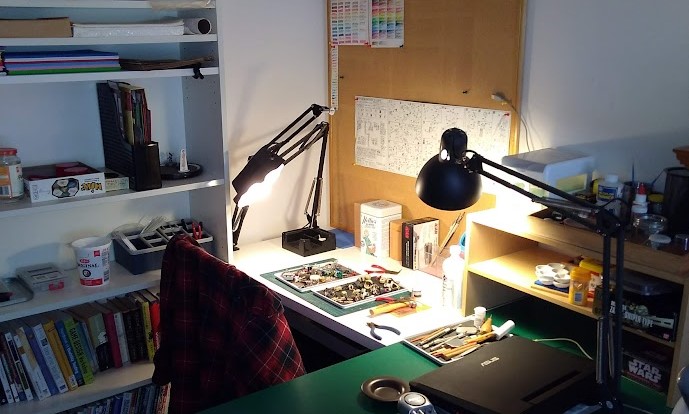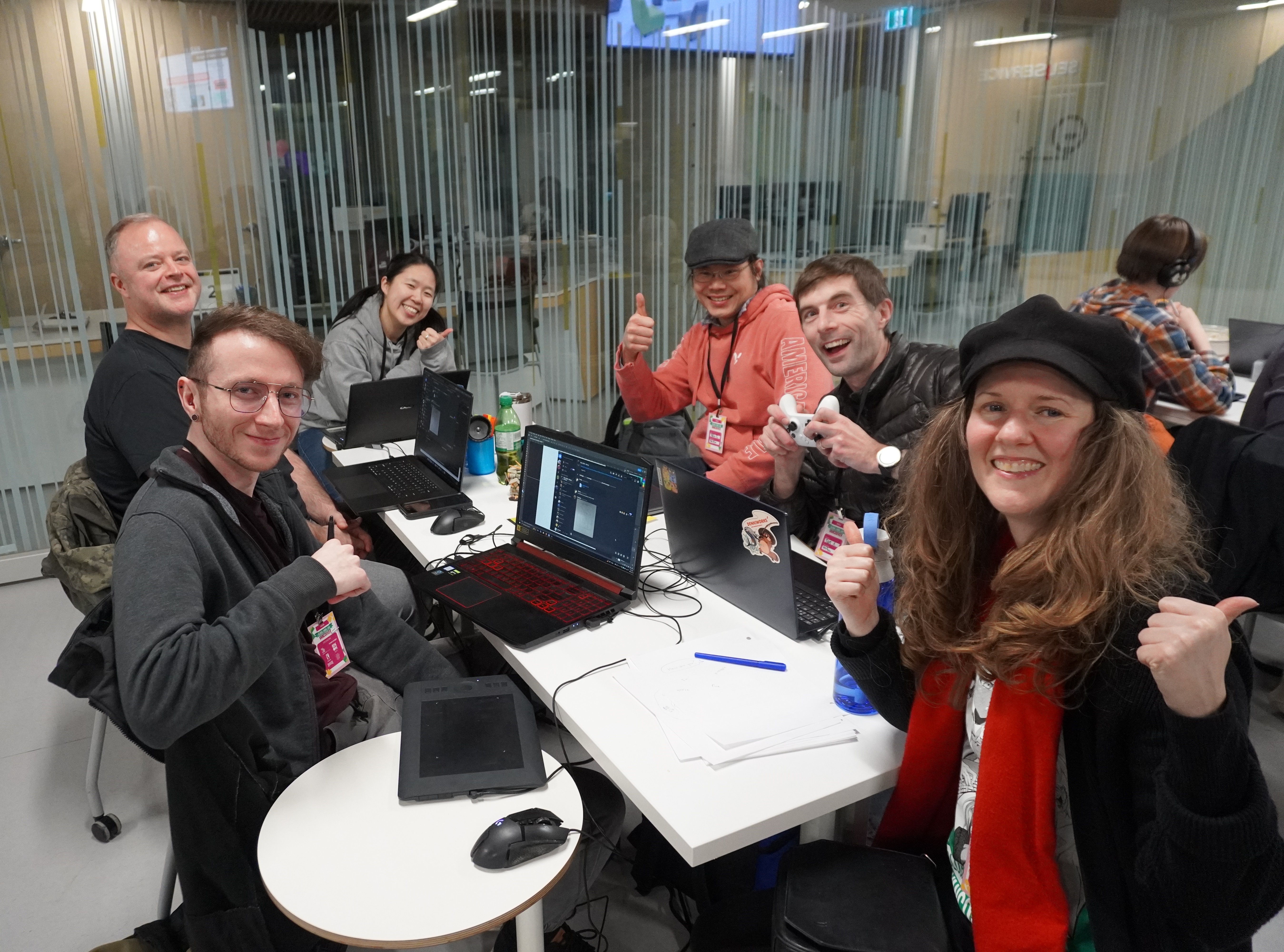About Me
I am a passionate independent game developer and designer. I focus on transforming ideas into meaningful, engaging experiences through context-driven design. Whether it's a complex mechanic or a simple interaction, my goal is to deliver clarity, functionality, and depth in every detail. Games have the power to transform how we think. They invite players to move beyond the everyday, encouraging them to contemplate and experience the world in new ways. My mission is to design systems that cultivate intelligence, empathy, and awareness, contributing to the overall well-being of both players and the communities around them.
Résumé
PDFDesign Ethos
My design philosophy is grounded in two key principles. First, I believe that games are functional cultural artifacts, essential to the
well-being of the players they serve and the communities they belong to. It is the responsibility of game developers to create games
that benefit both players and societies. Second, a proper game designer can consistently design and execute ideas, producing well-crafted
games across any concept.
To achieve these goals, I focus on studying the nature of play, games, and their relationship to people and cultures. My design approach is
context-driven, emphasizing the refinement of problem statements, design spaces, and player experiences, while prioritizing transparency and
process, alongside techniques that specifically address creative blocks and disagreements.
One of the joys of game design is knowing there’s a lifetime of learning ahead of me. Since game design is still a relatively new discipline,
I’ve found studying more established fields—such as industrial design, architecture, and fine arts—to be incredibly valuable. Additionally,
reading about games and play from complementary disciplines like anthropology, philosophy, and psychology has been crucial. I’m also a firm
believer in learning from others through designer interviews and industry talks, such as those at GDC, Full Indie Summit,
or on the Iwata Asks website!
Journey to Game Design
Battle City for the NES was my first encounter with a map editor! Unfortunately, my family was very strict about video games, so I didn’t get to spend much time with it, but it did plant the seed of game design in my soul.
Starfox 64's Nintendo Power player's guide had an interview with Miyamoto at the end. This was the first time I thought about game design as a career and the start of a lifelong habit of reading designer interviews. Many of my core design values can be traced directly back to that interview.
The Legend of Zelda: Ocarina of Time sparked my interest in architecture in games. Crossing the bridge from Kalikori Village into Hyrule Field for the first time will always be etched in my memory as the first emotionally and narratively significant moment in a game for me.
Pokemon Yellow made me realize traditional schooling wasn’t working. I struggled in chemistry but had the entire Pokédex memorized. This disconnect led me to use my own learning methods instead of accepting the usual advice, like "you just need to focus more" or "try harder". An added bonus was that I started noticing patterns in the Pokémon stats, which led me to think more critically about the intent behind those design choices.
Soul Calibur for the Dreamcast is my favorite fighting game of all time, and it taught how to learn any skill. One day, while labbing gambits in training mode, I had a realization: the same process used to master fighting game mechanics can be applied to all dexterity skills. I applied this to the cello and saw immediate and dramatic improvement. Soul Calibur was also the game that got me to really notice button layout because of how intuitive it was: swipe the thumb into X for a horizontal attack, push it forward to Y for a vertical attack, hold it in towards A for guard, and flick out to K for a kick!
Advance Wars is probably my favorite game of all time. It’s simple, elegant, and features a template-friendly CO system that encourages imagining new game mechanics. It’s also the first game where I really started to think about feedback loops.
Capcom vs. SNK juxtaposed two mechanically similar but differently designed systems, allowing me to compare and contrast them. I noticed how even small changes could impact gameplay, even on a casual level. It was also my first traditional 2D fighting game, so it serves as my baseline and helps me analyze most other fighting games.
Animation: My first love
For as long as I can remember, I’ve been captivated by animation. My earliest memories are a blend of scenes from French surrealist
film The King and the Mockingbird and classic Toei feature Gulliver’s Space Travels. Today, I’m particularly drawn to modern, ultra-flat
style animations found in UPA shorts, Disney’s Sleeping Beauty, anything by Cartoon Saloon, or vintage anime like The Gutsy Frog.
In high school, I had the opportunity to study traditional and stop-motion animation. This is also where I developed the habit of keeping
a sketchbook, which helped me tremendously when I started my studies in design. I received achievement awards for both years the elective
was available to me.
Coming from animation to game design came with distinct advantages. Because I understand animation as an illusion, I never fell into the
trap of striving for “realism” in game mechanics. My understanding of the illusion of weight and motion gave me an edge when it came to game
feel. Additionally, my knowledge of visual storytelling helps me in staging both narrative elements and important game information. I also
seem to have a knack for creating cute, appealing characters!
Midway through university, I made a decision to focus on either animation or game design. I set aside time to make the decision, but it
turned out to be an easy one. While I had more success in animation by following my intuition, game design required observation, empathy,
and a focus on the player experience through playtests. Ultimately, I felt that game design would help me grow as a more empathetic person,
offering me a lifetime of things to explore. I still have a deep love for animation, and I’d gladly pursue it as a secondary career,
but I feel confident in the path I chose.
Hobbies
Drawing & Cartoons
Drawing is both a creative outlet and a practical tool for me. I often unwind in the evening by doodling while watching cartoons. A game can be too stimulating before bed. Beyond that, sketching is an essential part of my design process—every prototype starts on paper.
Books
I read a lot of non-fiction, mostly related to game design or art instruction. A Pattern Language changed the way I read. It was the first book
I encountered that didn’t feel convoluted; the information was organized, straightforward, and concise. It made me realize I have a certain reading
style, and some books work better for me than others.
I also have a decent artbook collection. Before the BookOff downtown closed, I’d go every few months and spend hours hunting for treasures, often
leaving with a stack of three or four for just a few dollars each. These days, I’m more deliberate with my collecting, but my love for books hasn’t
faded. I love the way books smell and how they absorb sound, making bookstores and libraries feel like magical, intimate spaces.
Model Building
I don’t have much time for it these days, but I enjoy building model kits. I’m trying to branch out from Gunpla for variety. I have a couple of Ghibli
kits waiting for me, but I’ve been working on a Zaku Sniper for the past three years. I hand-paint my models since I don’t have the space or ventilation
for airbrushing, using special techniques I picked up from
Monster Attack Team Canada
, a local model building club. The results have been good enough that
some people have mistaken my work for airbrushing.
One of the biggest lessons I’ve learned from modeling is about colour. My early custom paint jobs turned out muddy and dark, so one day, I gave in and
followed the colour mixing guide in the Gunpla manual for a Ver. Ka RX-78. I was really surprised to find yellow in the grey—and that completely changed
how I approach colour.

Kelvin's modeling corner
Cello
I started learning the cello because of one of my favorite pieces: the main theme from Skies of Arcadia. Although I enjoyed it well enough at first, it didn’t really click for me until the 'Soul Calibur incident' I mentioned earlier. Unfortunately, I had to stop for several years due to health issues. A few years ago, I picked it back up, playing casually and building a small repertoire to pull out at parties. I’m not very good, I can’t even sight-read, but having even a little music theory helps sometimes.
Global Game Jam
I’ve been a regular at GGJ since 2012. For a long time, I worked graveyard shifts, which was very isolating. I didn’t mind so much since I’m an introvert, but it made it hard to engage with the game dev community. That said, I always took time off for GGJ. When I started working on Überkrieg in 2016, I’d do development at the jam instead of jamming. It was the one time of the year when I could really push other things aside and focus on the game. It was also great to reconnect with jam friends. I worked through heavy parts of the game, like pathfinding and networking, during GGJ. By 2021, Überkrieg was far enough along that development could happen in smaller chunks, and with a couple of programmer friends jumping on the project, I started jamming again, and it’s been a blast every time!

Kelvin and friends at GGJ 2025